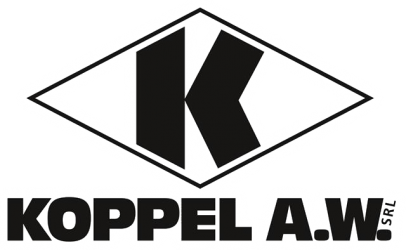Koppel A.W. has been installing lifts since 1958, but since some years, after requirements by his Clients, has been proposing on the market also its own elevating platforms for disabled or elderly people.
It is a product which is similar but not equal to the “classical” lift, technically it is a machine, that is conforming to Machine directive 2006/42/Ce and EN 81-41 standard.
In practice it differs from lifts as follows:
– less room needed in vertical and horizontal section, with the same capacity
– speed which cannot overcome 0.15 m/s
– due to this small speed, and reduced capacity, the needed power supply and starting current are small (power supply: usually 1.5 KW), giving the chance of cost saving on the electric bill
– lack of car door, where the operation is a hold on type (otherwise it is possible to install a manual or automatic car doors, with normal operation)
– in general, landing doors are manual swing type, but now it is possible to install also normal automatic sliding doors, where there is room to do so.
The power supply is single-phase, normally 220 V.
These platforms fit in particular to the use of persons with impaired mobility, and in family houses, or in any case small buildings with a few apartments and low traffic.
They are often installed where it is not possible or very uneasy to fit a real lift, because of problems of vertical or horizontal room.
Their travel also should not be too high, considering the very limited speed of 0.15 m/s; for instance, the time needed to travel 4 m is about 27 seconds. In the case this factor is critical for the Client, a real lift is still the best choice.
Reduced vertical safety spaces HTFR
It is possible to install in the existing building a hydraulic or also an electric lifts with reduced vertical safety spaces.
Indeed, not always it si possible to have within the well the standard vertical safety spaces required by EN 81-20 norms. That is the two ends of the well have not available enough height according to these standards. But another harmonized norm for this scope, EN 81-21, permits to install alternative safety systems which still make safe the lift for the users and for the personnel working in the well.
The clients’ advantage is that they don’t have to make masonry works in the buildings which in some cases are impossible, or very expensive, or not acceptable for the competent authorities (i.e. to break through the well’s slab).
According to these solutions, the headroom may be high less than 3 m, and the pit high much less than the usual height of about 1.5 provided within the standards’ frame.
Of course, every case should be exercised one by one, also because, according to the 2014/33/UE Directive, in some cases it is necessary that the building owner asks for a preliminary authorization to this kind of installation by the competent national authorities. This issue may be done with our assistance: our commercial and technical offices are available to examinate the situation and to give the right advices to solve this kind of problems.
